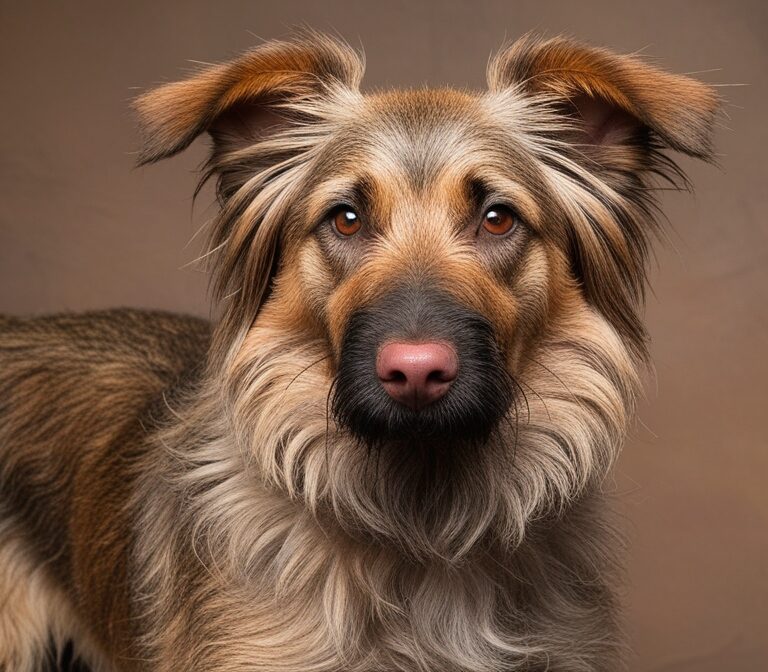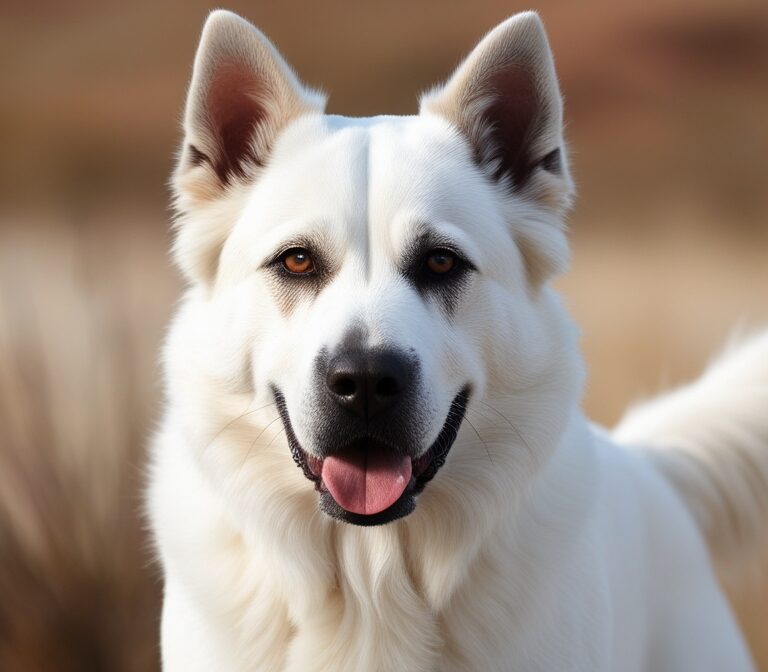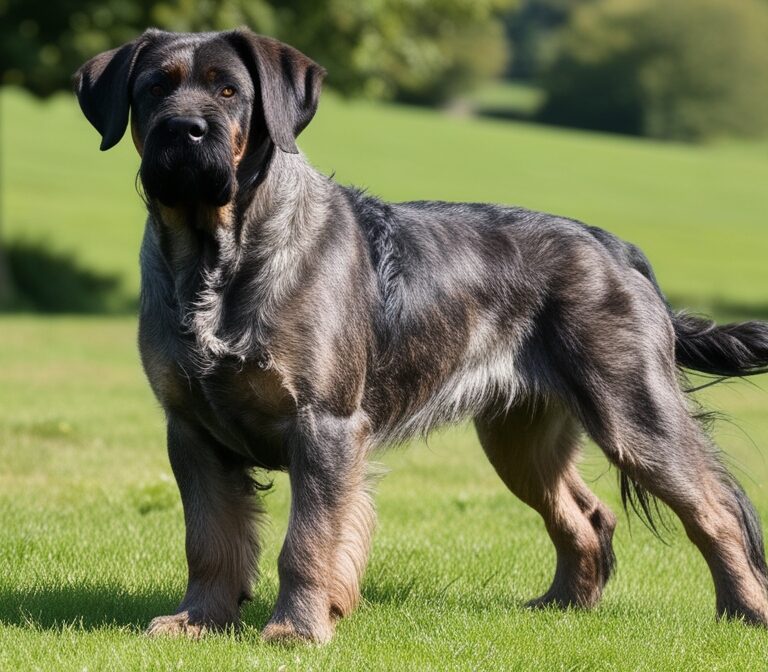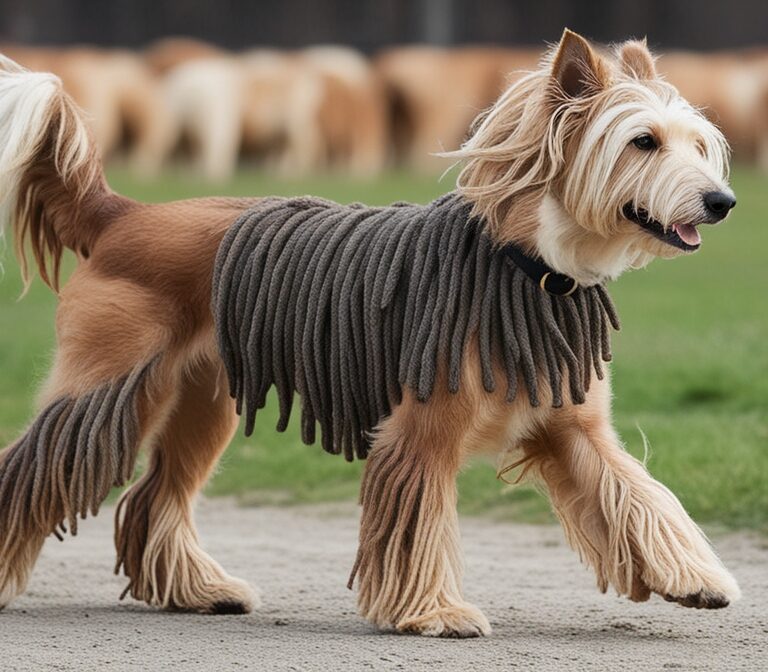Bernese Mountain Dog: Complete Guide to the Swiss Gentle Giant
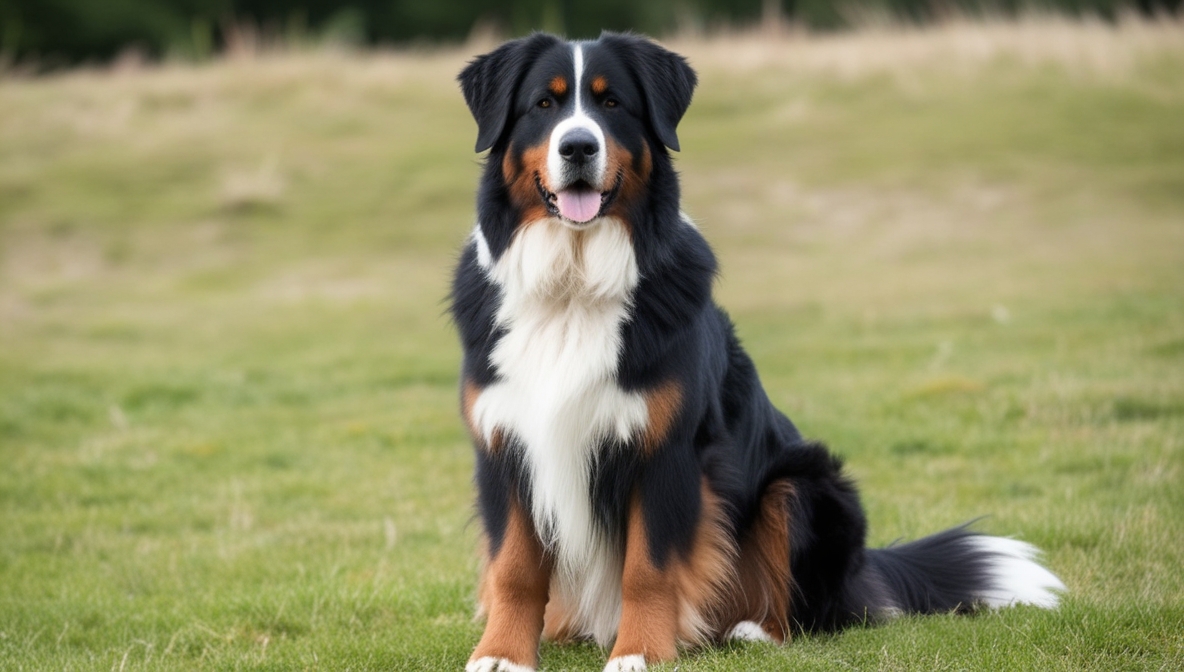
Introduction to the Bernese Mountain Dog
The Bernese Mountain Dog, often affectionately called the Berner, is a large, powerful, and strikingly beautiful dog breed originating from Switzerland. Recognized for its tricolor coat—jet black, rust, and white—this breed is both majestic in appearance and gentle in temperament. Bernese Mountain Dogs have historically been bred for farm work, especially in the Swiss Alps, where they were valued as draft animals capable of pulling carts, herding livestock, and guarding homesteads.
One of the defining features of the breed is its temperament, described as affectionate, intelligent, loyal, and faithful. Unlike many large working dogs, Berners thrive in a family environment and enjoy spending time with their human companions. Their lifespan ranges between 7–10 years, which is shorter than many smaller breeds but typical for a giant working dog.
Interest in the breed has surged in recent years, not only because of its stunning looks but also due to its reputation as a gentle family dog. However, potential owners must be aware of the responsibilities associated with raising such a large and sensitive breed. Berners require consistent training, socialization, regular grooming, and an active lifestyle.
In this article, we’ll explore every aspect of the Bernese Mountain Dog, from its origins in the Swiss Alps to its role in modern households. We’ll cover topics like training requirements, grooming routines, nutrition, health challenges, and adoption considerations. By the end, you’ll have a comprehensive understanding of whether the Berner is the right fit for your family and lifestyle.
Origins of the Breed in the Swiss Alps
The Bernese Mountain Dog traces its roots back more than 2,000 years, when the Romans brought mastiff-type dogs into Switzerland during their European conquests. These dogs interbred with local farm dogs, leading to the development of the Sennenhund family, which includes four distinct Swiss mountain breeds: the Bernese, Appenzeller, Entlebucher, and Greater Swiss Mountain Dog.
The Berner was specifically bred in the canton of Bern, a region of Switzerland known for its fertile valleys and mountainous terrain. Farmers relied on these dogs for versatile tasks: they pulled carts loaded with dairy products to markets, herded cattle in alpine pastures, and acted as guard dogs for farms. The combination of strength, endurance, and intelligence made them indispensable to Swiss farmers.
By the late 1800s, industrialization and the advent of modern transportation reduced the need for draft dogs, and the breed faced a decline. Fortunately, Swiss enthusiasts, including Professor Albert Heim, recognized the cultural and agricultural importance of the Bernese Mountain Dog and worked to preserve and standardize the breed.
Today, the Bernese is not only cherished in Switzerland but is beloved worldwide. The American Kennel Club (AKC) officially recognized the breed in 1937, and it has steadily grown in popularity, especially in North America and Europe. Despite modernization, the Berner remains a living symbol of Swiss heritage, representing the bond between people and working dogs in rural alpine communities.
Historical Role as a Working Dog
The Bernese Mountain Dog’s identity is deeply tied to its history as a working farm dog. Unlike many modern breeds developed for companionship, Berners were bred with utility in mind. Their roles included:
- Drafting Work: Farmers harnessed Berners to small carts, known as “dogcarts”, to transport goods like milk, cheese, and produce.
- Herding Cattle: They guided livestock across mountain pastures and served as guardians against predators.
- Guarding Property: Their imposing size and deep bark made them excellent deterrents to trespassers.
- Companionship: While primarily working dogs, Berners were also appreciated for their affectionate nature, making them ideal family protectors.
The physical build of the breed reflects these duties: broad chest, strong legs, and heavy bones designed for endurance. Their double coat protected them from the cold and wet alpine climate, while their intelligence allowed them to learn complex tasks.
Interestingly, Berners were also integral to children’s lives on farms. Historical accounts describe them pulling small carts for children or being constant play companions when not working in the fields. This dual role—worker and family companion—remains one of the most appealing aspects of the breed today.
The breed’s versatility continues into modern times. Though they are rarely used as draft animals today, many Berners compete in cart-pulling competitions, obedience trials, and even therapy dog programs. Their historical working heritage gives them a sense of purpose, which is why engaging them in activities is essential for their well-being.
Recognition by the AKC and FCI
The Bernese Mountain Dog is internationally recognized by several major kennel clubs, which reinforces its credibility as a standardized and carefully preserved dog breed. In the United States, the American Kennel Club (AKC) officially recognized the breed in 1937, classifying it under the Working Group. This classification reflects its heritage as a versatile farm dog bred for pulling carts, herding, and guarding livestock.
Globally, the breed is acknowledged by the Fédération Cynologique Internationale (FCI), the international canine organization based in Belgium. The FCI groups the Bernese Mountain Dog under Group 2: Pinscher and Schnauzer – Molossoid and Swiss Mountain Dogs, specifically in Section 3 (Swiss Mountain and Cattle Dogs). Other organizations such as the United Kennel Club (UKC) and the Canadian Kennel Club (CKC) also recognize the breed.
Each of these organizations outlines breed standards, which include specifics about size, proportions, temperament, and coat coloration. For example:
- Size: Males should stand 25–27.5 inches tall, while females are slightly smaller at 23–26 inches.
- Weight: The healthy range for males is 80–115 pounds, and for females, 70–95 pounds.
- Coat: A tricolor coat with black as the primary color, complemented by rust and white markings, is required.
- Temperament: Breed standards emphasize an affectionate, intelligent, and loyal personality.
Recognition by these organizations has helped preserve the integrity of the breed. Responsible breeders adhere to these standards when selecting dogs for breeding, ensuring not only that physical traits remain consistent but also that temperament and health are prioritized.
In addition, Bernese Mountain Dogs are frequently showcased in conformation shows, where they are judged against the breed standard. They also participate in drafting events, obedience competitions, and even therapy programs, demonstrating the versatility the breed has retained since its origins in the Swiss Alps.
Physical Characteristics of the Breed
The Bernese Mountain Dog is a large, powerful, and well-proportioned working dog, instantly recognizable for its majestic appearance and distinctive tricolor coat. Let’s break down its key physical features:
Size and Weight Range
The Bernese is classified as a giant dog breed. Males typically stand 25–27.5 inches tall at the shoulder and weigh 80–115 pounds, while females are slightly smaller at 23–26 inches tall and 70–95 pounds. Their strong bone structure and muscular build were specifically developed to support their historic role as drafting and herding dogs.
Distinctive Tricolor Coat
The coat of the Bernese is one of its most striking features. It is a double coat with a thick, woolly undercoat for insulation and a longer, silky outer coat that provides protection against cold and wet conditions in the Swiss Alps. The classic coloration is black with rust markings on the cheeks, legs, and eyebrows, along with white accents on the chest, nose, and feet.
Regular grooming is essential, not only for maintaining the beauty of the coat but also for managing the breed’s tendency to shed heavily, particularly during seasonal changes.
Lifespan: 7–10 Years
Unfortunately, the lifespan of the Bernese is relatively short compared to smaller breeds. On average, Bernese Mountain Dogs live 7 to 10 years. This reduced lifespan is linked to their large size and a genetic predisposition to health issues such as cancer, hip dysplasia, and bloat. Owners can help extend their Berner’s lifespan through responsible breeding, proper diet, exercise, and preventive veterinary care.
In summary, the physical characteristics of the Bernese Mountain Dog make it a visually striking and functional breed. Its combination of size, strength, and beauty has made it one of the most beloved giant family dogs worldwide.
Temperament and Personality Traits
The Bernese Mountain Dog is often described as the perfect balance between a working breed and a gentle family companion. Its personality is one of the main reasons the breed is so popular among dog enthusiasts.
Affectionate Nature
Berners are deeply affectionate dogs. They thrive on companionship and often form strong emotional bonds with their families. They are known for being “velcro dogs,” meaning they like to stay close to their owners rather than wandering off independently.
Intelligence and Trainability
Intelligence is another hallmark trait. The Bernese is quick to learn commands, particularly when positive reinforcement methods—like treats and praise—are used. However, they can sometimes be sensitive, meaning harsh corrections or negative training techniques may backfire. Their emotional intelligence makes them particularly suited to roles as therapy and support dogs.
Loyalty and Faithfulness
Loyalty is deeply ingrained in the breed. Historically, they were bred to guard farms and protect cattle, which required both vigilance and faithfulness to their human companions. This trait translates well to family life, where they are known for being dependable, trustworthy, and protective without being aggressive.
Social Disposition
Bernese Mountain Dogs are generally good-natured with strangers, especially if they are socialized from an early age. Their calm demeanor and tolerance make them excellent companions for children and other household pets.
That said, potential owners should be aware of their sensitive temperament. Berners do not respond well to being left alone for long hours, and prolonged isolation may lead to separation anxiety. They thrive best in environments where they are part of daily family activities.
In summary, the temperament of the Bernese Mountain Dog can be summed up as affectionate, intelligent, faithful, and loyal, making them one of the best family dogs for those who can meet their physical and emotional needs.
Suitability as a Family Dog
The Bernese Mountain Dog is often described as one of the most suitable family dogs, thanks to its gentle temperament and affectionate personality. However, their suitability also depends on whether a family can meet the breed’s needs for space, exercise, and grooming.
Behavior with Children
Berners are especially well-loved for their behavior around children. Their gentle giant personality allows them to interact carefully with young kids. Many owners report that Berners are naturally protective and patient, making them reliable companions for families with small children.
Interaction with Other Pets
This breed generally gets along well with other dogs and household pets. Their history as farm dogs, where they often lived alongside multiple animals, has contributed to their social adaptability. Early socialization helps ensure they maintain a balanced, non-aggressive approach to other pets.
Household Environment
Bernese Mountain Dogs thrive in homes where they are considered part of the family. They prefer spacious environments, ideally with a backyard where they can roam and play. Apartment living may be possible if the owner is committed to daily walks and exercise, but a house with outdoor access is the most suitable.
Emotional Needs
Because Berners are deeply attached to their owners, they do not do well in households where they will be left alone for long periods. Families with busy work schedules may struggle to provide the attention and companionship that the breed requires.
In conclusion, Bernese Mountain Dogs are excellent family companions, especially for households that can offer them affection, exercise, and space. Their protective yet gentle nature makes them a reliable and loving addition to homes with children and other pets.
Final Thoughts: Is the Bernese Mountain Dog Right for You?
The Bernese Mountain Dog is more than just a visually stunning dog breed with a striking tricolor coat; it is a loyal, affectionate, and intelligent companion with deep roots in the Swiss Alps. Bred as a working dog, the Berner carries the strength and endurance of its ancestors, yet pairs these traits with a gentle and dependable temperament that makes it an ideal family companion.
For families, the Bernese offers a rare combination: the protective instincts of a guardian dog, the playful patience of a child’s best friend, and the emotional sensitivity of a true companion. They excel in homes where they can be an integral part of daily life rather than being left alone. Owners who provide consistent training, socialization, and mental stimulation will find the Berner to be both cooperative and eager to please.
However, potential owners must also weigh the challenges. The breed’s short lifespan of 7–10 years, predisposition to health problems like hip dysplasia, elbow dysplasia, and cancer, and heavy shedding require a commitment of time, financial resources, and emotional resilience. Their size and exercise needs also mean that they are best suited to households with sufficient space and active lifestyles.
Despite these considerations, the Bernese Mountain Dog is consistently ranked among the most beloved large breeds worldwide. Its recognition by the American Kennel Club (AKC), Fédération Cynologique Internationale (FCI), and other organizations reflects not only its standardization but also its enduring appeal. Whether participating in therapy programs, drafting competitions, or simply playing with children in the backyard, the Bernese adapts beautifully to a wide range of roles.In conclusion, if you are looking for a devoted, affectionate, and majestic family dog and are prepared to meet the breed’s physical, grooming, and health needs, the Bernese Mountain Dog can bring immense joy, loyalty, and love to your life. This is a breed that thrives when given purpose, companionship, and care—qualities that reflect the very spirit of the Swiss farmers who first bred them centuries ago.
